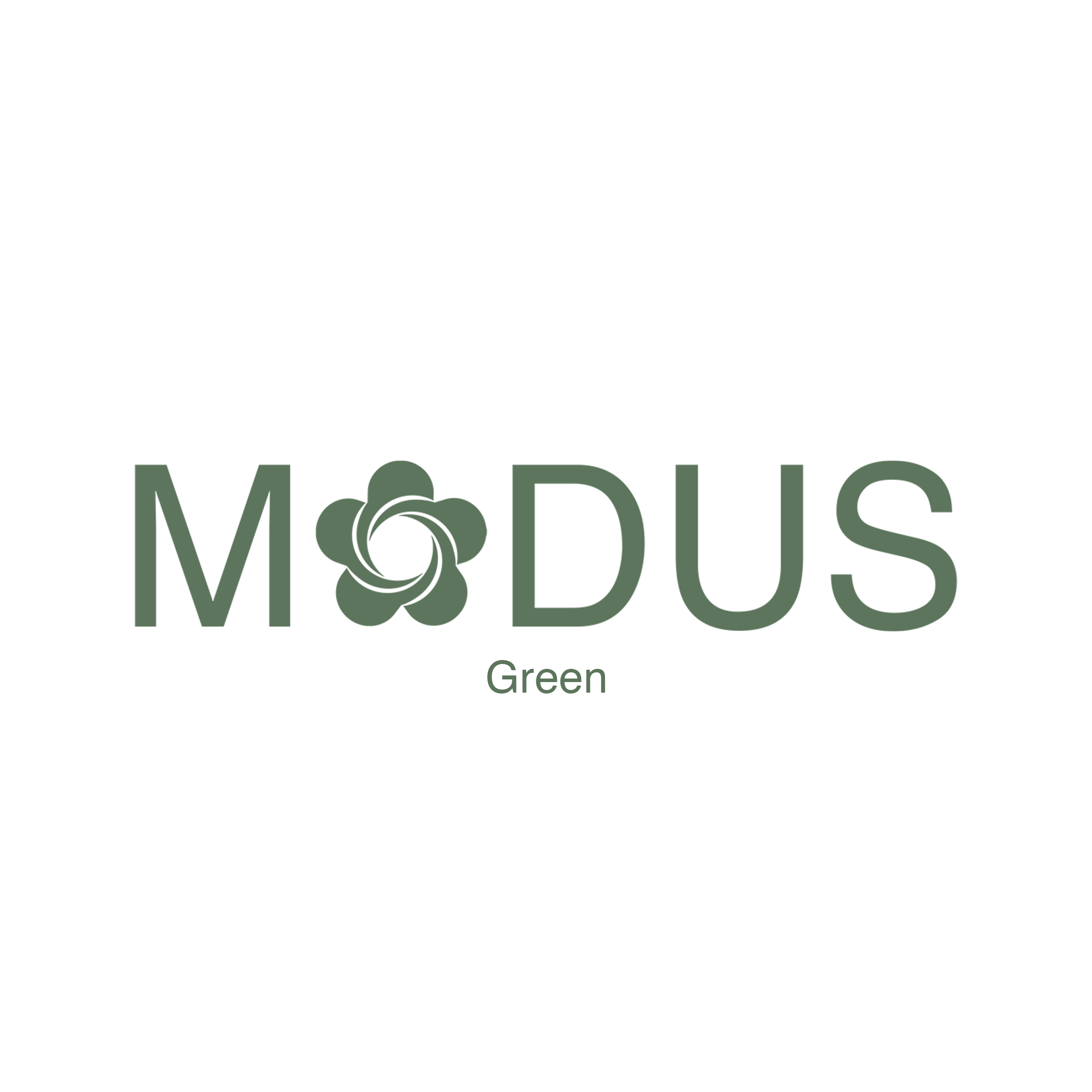Modus Green
Environmental sustainability is now at the top of Boardroom agendas, not least because there is a legal and ethical imperative for every organisation and supply chain to combat climate change. But translating plans and intentions into effective outcomes is challenging. It requires a capability to visualise, measure, plan, change and sustain at a level of rigour never previously undertaken.
Visit Modus Sustainability Website by Clicking HereUnderstanding the bigger picture of product value systems and impacts is key to driving a change strategy.
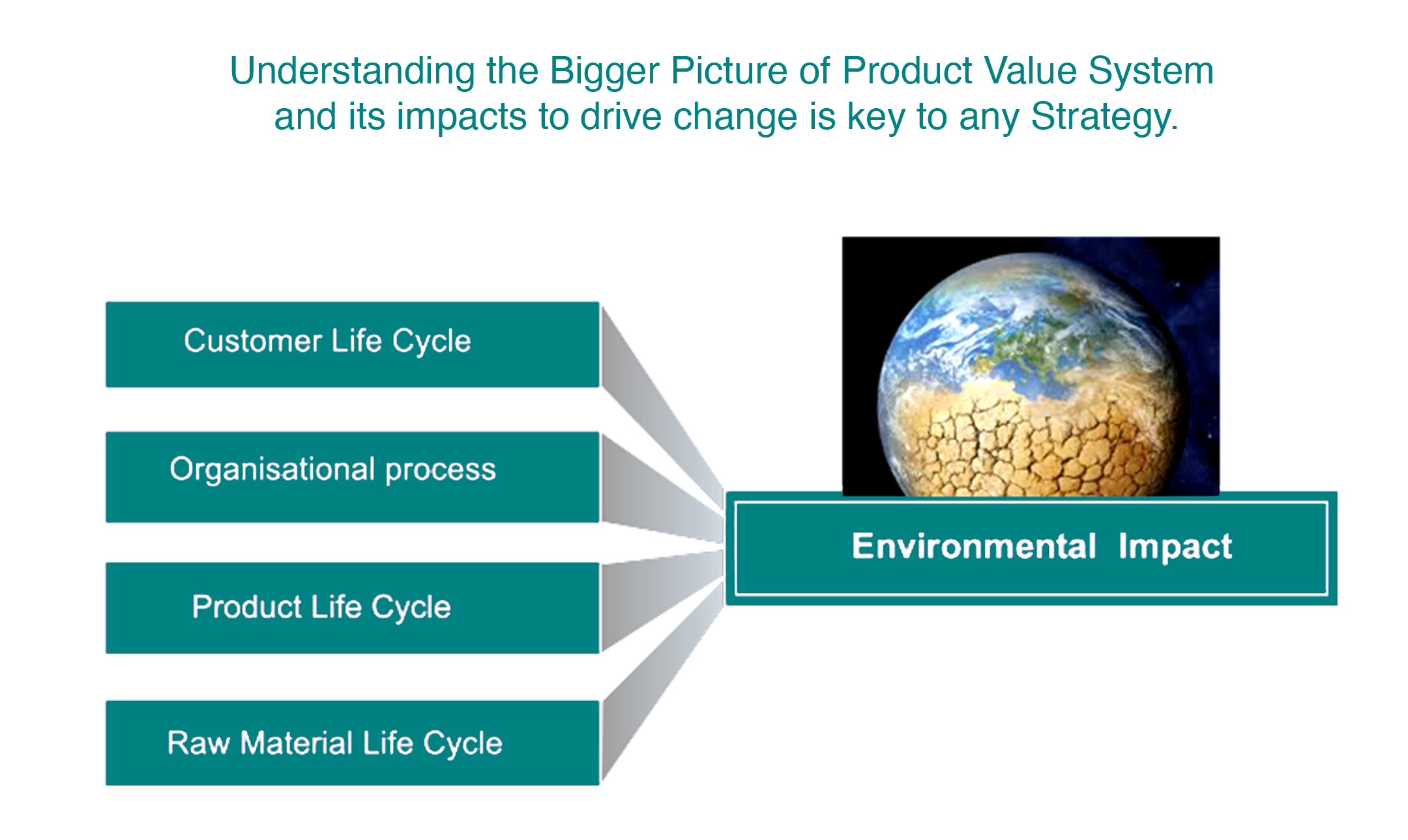
Driving Product Value System thinking in organisations starts with visualisation and understanding of the true end-to-end life cycle from raw material acquisition to product development and production, use of the products, and disposal of all components back into the environment. Hence visibility and measurement of environmental impacts right across Value Chains and Value Systems is a pre-requisite of informing and building a full agenda for the resultant change requirements. The following are just two examples of the Modus end-to-end Value Chain mapping approach to visualising impacts. The key is to identify and understand environmental impacts across the entire value chain using a cause and effect approach.
As we emerge from the covid pandemic, we need to re-focus on global warming, environmental sustainability and the impacts of CO2 and waste on our precious planet. We need to step back, rethink and re-engineer our strategy in order to tackle this existential issue before it is too late. However, it is a monumental challenge which requires us to focus on a whole range of perspectives all at the same time. Factors such as carbon, land use, plastic, waste of all kinds, water usage and disaster management must all be considered at every point in the supply chain – end-to-end, from source to customer, recycling and final disposal. This can only be achieved when you consider the entire Value System (You can read more about this in our paper on Value Systems in the links below) and its interrelated impact touch points at a detailed level. Examples include:
1. Tea and Coffee End to End Value Chain & Value System thinking with Plastic impact.
Here you will see that, reducing plastic in end product packaging is not the only fix, but plastic is being used through out the value system and the issue has to be looked at from a value system point of view for true sustainable practices...
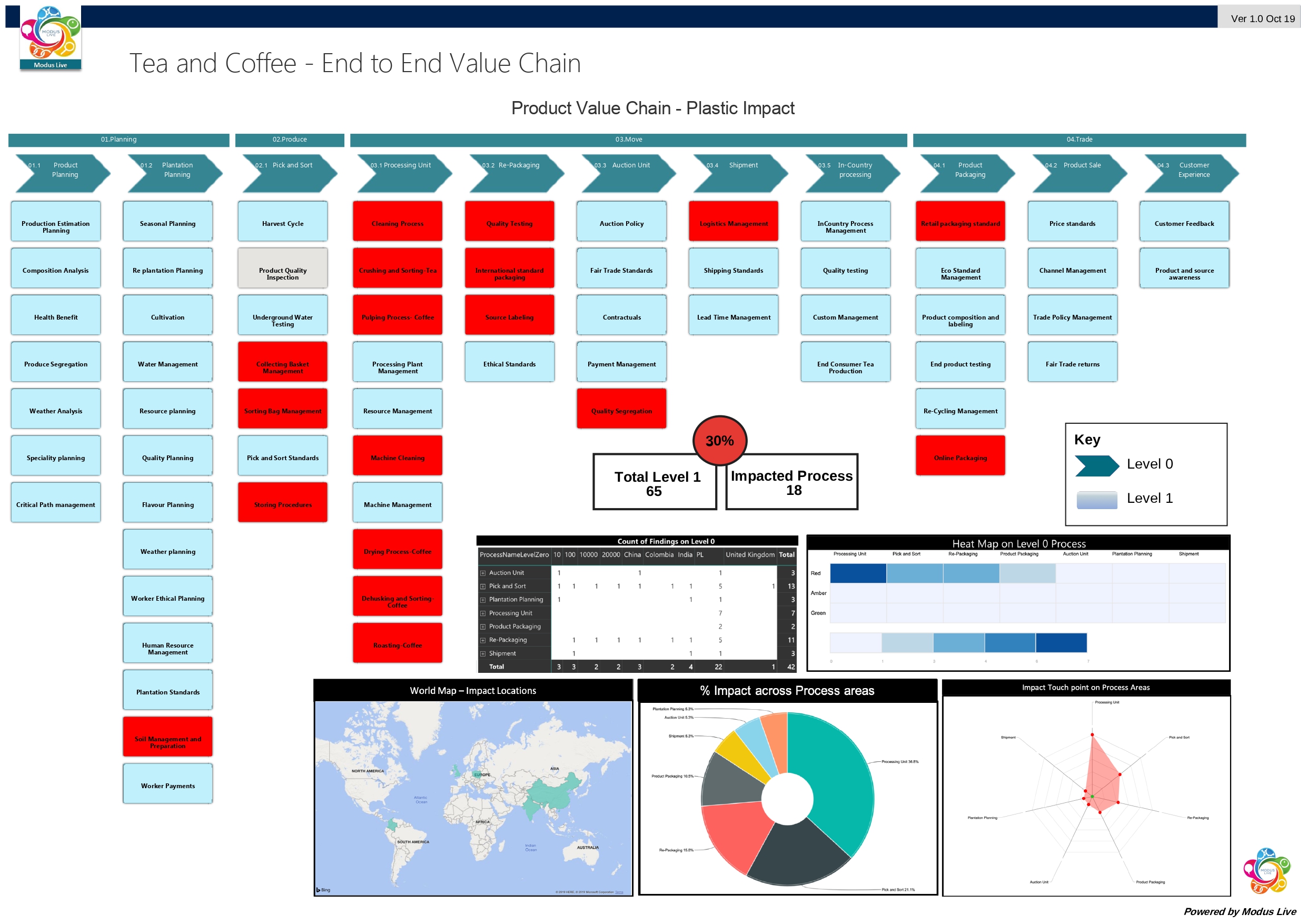
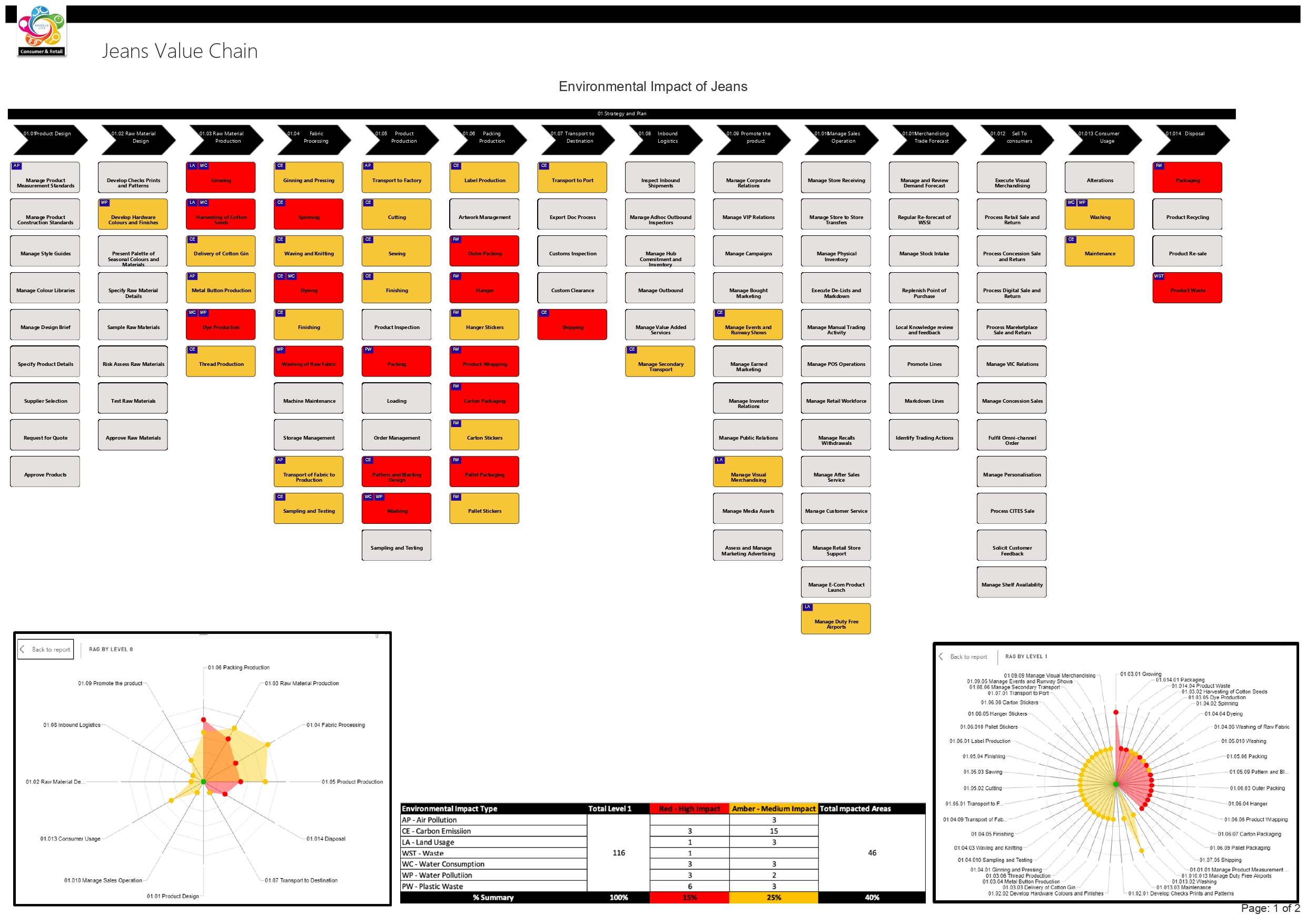
2. Example of Jeans End to End Value Chain & Value System with Water Impact.
Here you will see the water usage impact across the Value System of Jeans...
Building the Sustainability Transformation for your Organisation
This detailed visualisation can be logically grouped into various initiatives that will be deployed to target and drive change via a target operating model. The following is an example of a Sustainability Transformation programme structure grouping requirements under a logical set of key initiatives or pillars of change. When measures, deltas and costs and ROI are applied, this approach provides a clear canvas for the entire supply chain to engage and adopt in a collaborative transformation programme.
This centralised functionality and tool set also provides the capability for an ongoing ‘Transformation as Usual’ practice across the organisation and supply chain, building on the skills, methods, tools and experience captured in the initial transformation. In this way the value of change is sustained and updated as a cultural norm and becomes a corporate asset. Of course, we need to achieve this in a fast, robust, structured way, which is where the Modus Sustainability Hub can quickly build up the target Value Systems and resultant Operating Models and feed them into delivery plans from day 1.
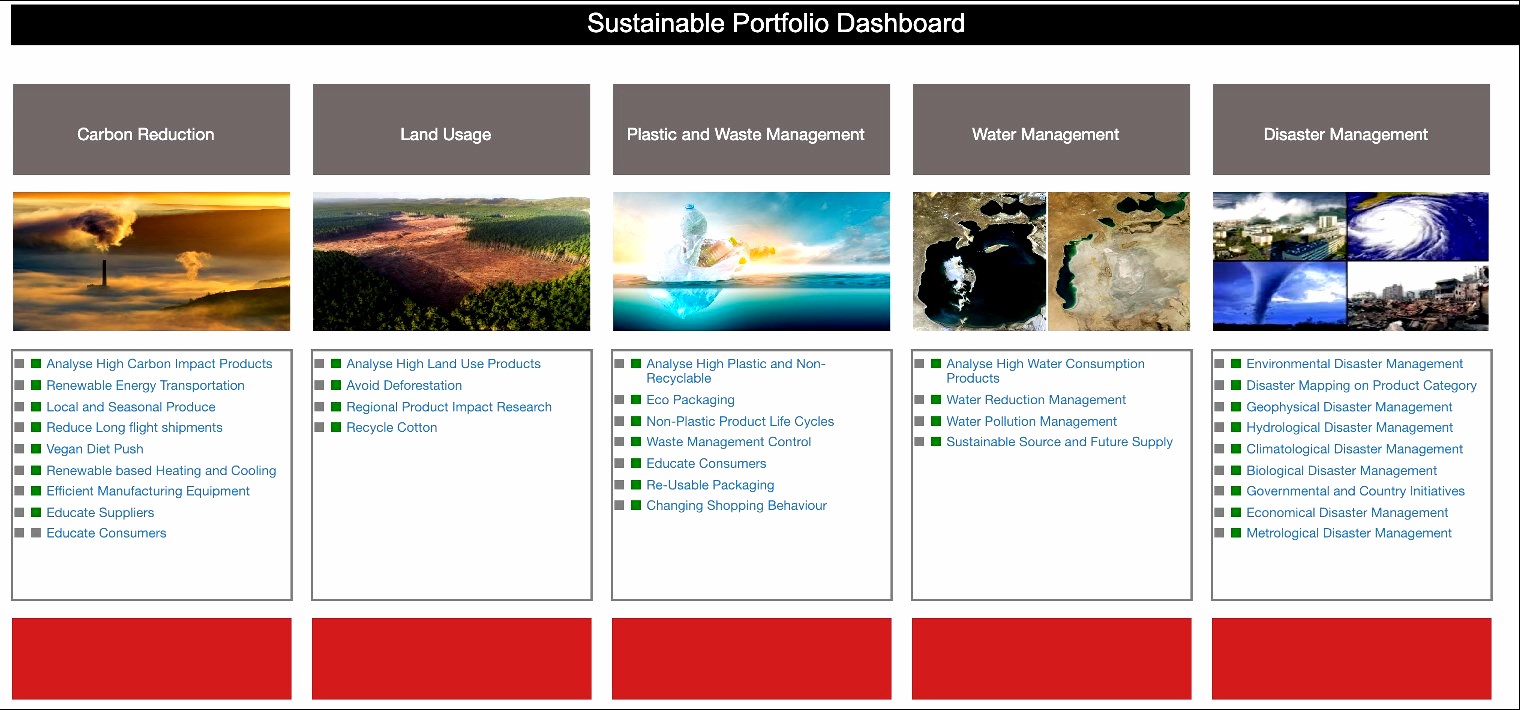
The Modus Approach - Sustainable Business Transformation
The following video illustrates a high-level view of the Modus Enterprise Transformation Platform for sustainability including the key steps in our approach to defining, planning and delivering change.

Transformation As Usual Hub:
This also establishes the hub for your organisation to adopt a 'Transformation as Usual' model to ensure that change becomes a continuous core competence.

Faster Mobilisation with the right approach:
Within Modus we can quickly bring to life the Value Chain / Value System impact touch points and establish your centralised environment in-order to plan and manage such complex Business Transformations.
We have found that many leadership teams fully appreciate the need to pursue sustainability programmes such as carbon neutrality, but do not know how best to approach it to achieve a robust, timely outcome without being swamped with complexity. The Modus solution provides all the tools, methods and capabilities in one central platform to guide you from planning and launch to effective delivery and adoption of change.

Cross Transformational Importance:
Inevitably, at any point in time, organisations will already have multiple change programmes planned or in progress. Clearly, these need to be assessed to understand how sustainability requirements may impact and change elements of these, and vice- versa.
Whether related to systems, product, operations, infrastructure and so on, it is vital that impacts are cross-referenced before conflicting solutions are embedded. That is why the Modus Solution includes cross-programme assurance capability that provides quick and easy methods and tools for cross-referencing, informing and resolving potential conflicts.
Value System and Modus Transformation Platform White Paper.
To know more about Value Chains and Value Systems read our White Paper on Value System thinking by viewing the link:
To know more about End-to-End Transformation and how to get your organisation into Transformation as Usual mode, read our White Paper on Business Transformation for the Digital Era, by clicking on the link:
To know more about the view Environment Messaging, read the below link:
Act now to plan and manage your sustainability transformation to meet the very real challenges of climate change and sustainability. Our connected, centralised Enterprise Transformation Platform can help you take the leap towards building and delivering a true sustainability Transformation.
